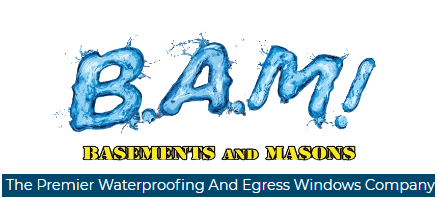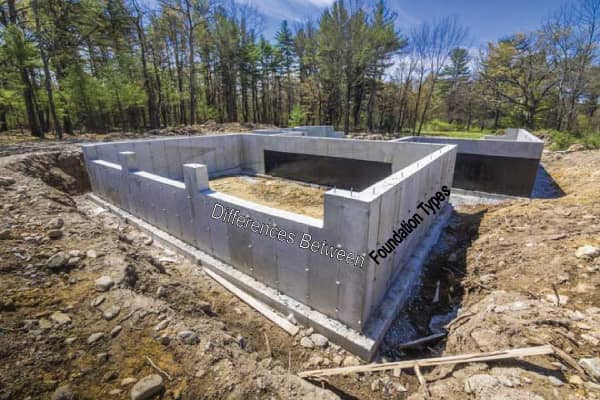The Differences Between Basement Foundation types
When it comes to buying a home or building a new one, basement-foundation-types is imperative that every homeowner understands different things about the home’s main structures and systems. While few people forget to think about the home’s foundation, the simple truth of the matter is that this is one of the most important aspects of the structure.
For any home to become a solid structure, you need a good foundation. It’s what a home is built on, it must provide the stability and strength required for the whole structure. A home’s foundation serves many different purposes. It prevents the house from sinking into the soil below, and it also helps to keep moisture from entering the structure. Foundations also make homes resistant to movement. While foundations are an essential component of any home, not all foundations are the same. There are many different types as we’ll discuss below.
Poured Concrete walls
By far the most popular type of basement construction, solid concrete is better able to resist cave-ins caused by lateral pressures of water, earth, and wind. People prefer this option because it’s sturdy and simple. As the name suggests, poured concrete basement construction begins with the pouring of a footing for the foundation.
When water leaks do occur in poured concrete walls, they generally develop along the joints between the walls and the floor. It’s also possible for cracks to form in the walls, and these may allow small amounts of water to seep into the basement over time. A poured concrete foundation is good at resisting water pressure from the outside, which means your home is better protected against leaks. These are also easier to waterproof, since the foundation is made of one solidified material.
Concrete Block walls
The least-expensive option for basement construction involves the use of concrete blocks or masonry. The walls are made of cinder blocks and have to be constructed by a mason. Steel rebar and concrete has to be used per code to reinforce the strength of these walls. Older codes did not require reinforced rebar and concrete.
Concrete block walls tend to be more susceptible to water leaks. In addition to the potential for leaks along floor and wall joints, water can sometimes seep through the mortar that holds the individual blocks together.
The hollow nature of cinder blocks also means they can hold water for long periods of time after it gets in, even after the surrounding soil has dried.
Stone field or clay walls
If you’re buying an older or historic home, you may find that the basement foundation has been constructed with stone or clay tile walls. Such walls were fairly common in past decades and were generally selected when other materials were not readily available. They can be very strong but also tend to be more rudimentary in nature. The biggest potential risk with stone and clay tile basement foundations is ground water can seep through and into the basement fairly easily. This is especially the case when it comes to stone walls that have many gaps and cracks. An interior perimeter drain system is usually necessary to address this issue.
Due to their composition and lack of uniformity, stone foundations are more likely to have problems when mortar crumbles due to water or even just time. Crumbling is never good but think about the structure of a stone foundation vs a block foundation; if the mortar between two blocks starts to decay, it’s a problem, but due to the uniformity of the blocks and the building structure, you have some time to fix it.
Wood
Wood foundations are simpler, quicker and cheaper to construct than masonry foundations. On average, they will not, however, last as long as masonry foundations and are less durable in the long-term. Typically, they are made out of treated wood stud walls and plywood. Wood foundation walls are very rare in most areas.
Wood in contact with soil is never a great idea. When poor surface drainage causes damage to a concrete foundation, it might result in cracking – cracks can usually be patched. Moisture damage to a wood foundation means rot damage, and once there is rot present, it tends to spread to adjacent areas. If you plan to build a house with a wood foundation, it is extremely important to control surface drainage so that water is not discharging anywhere near the foundation wall. If you are buying a house with a wood foundation, you should have it analyzed by a structural engineer to determine an estimated remaining service life and be sure to correct all surface drainage issues immediately.
Monolithic
A monolithic slab is a giant block of cement that’s poured in one, fell swoop. While it may be poured all at once, it’s not necessarily a uniform slab. It’s made to be thicker in areas where there will be a load-bearing wall and in all perimeter areas (in place of footers). This provides added support in the most crucial positions.
Monolithic slabs can crack easily if they’re not set on level ground.
CALL BAM
No project is too big or too small for BAM basements and Masons Of Des Moines. We offer free estimates and help you make the right decision for your home and family. We offer limited lifetime warranty on our work and install quality waterproofing products. BAM Basements and Masons is your Premier waterproofing and Egress window company serving the Des Moines, Iowa area. If you’re located in Des Moines, Ankeny, Bondurant, Altoona, Pleasant hill, Ames, Adel, Waukee, Indianola, Grimes, Urbandale, Johnston, West Des Moines, Polk City, Clive, Newton, Waukee, or the surrounding areas, we’re the place to call.


